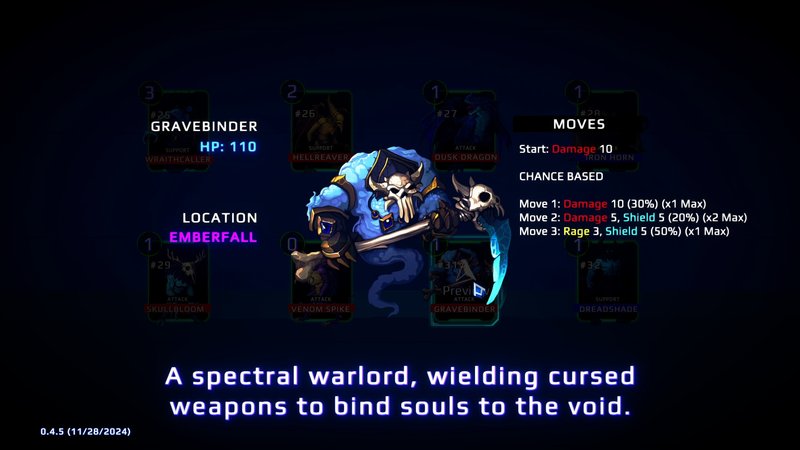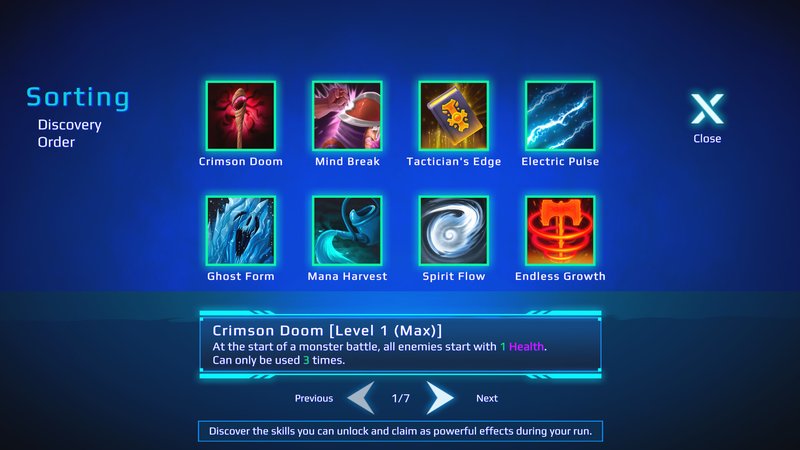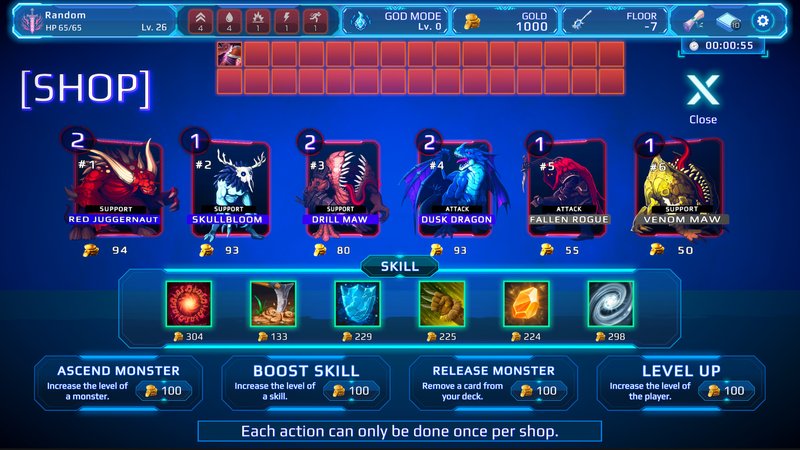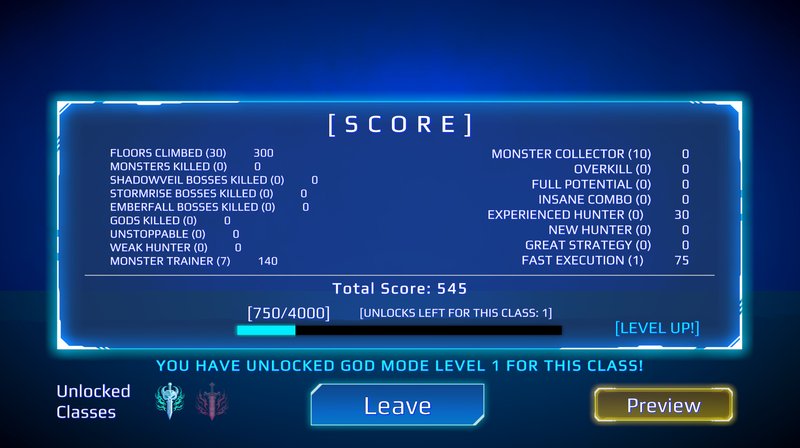Review: Blue Hunter
Blue Hunter Review: A Serviceable Necromantic Deckbuilder With Unrealized Potential
In the ever-expanding pantheon of roguelike deckbuilders that have proliferated since Slay the Spire’s paradigm-shifting emergence, one must approach each new entrant with a measured skepticism. Blue Hunter, developed by the solitary auteur NourSaiFR, presents itself as yet another contender in this increasingly saturated ludic space. Its primary conceit—the ability to resurrect vanquished foes as playable cards—while not entirely novel, does offer a modicum of distinctiveness in an otherwise derivative framework.
As I settled into my ergonomic Italian leather chair, vintage Montblanc fountain pen poised over my moleskine notebook, I found myself simultaneously intrigued and underwhelmed by what Blue Hunter proffers to the discerning connoisseur of strategic card-based combat systems.
Mechanical Foundations: Familiar Territory With a Necromantic Twist
At its core, Blue Hunter adheres religiously to the established canonical structure of contemporary roguelike deckbuilders: procedurally generated encounters, incremental deck optimization, and the inexorable march toward increasingly formidable adversaries. The standard energy-per-turn economy (a pedestrian three units) governs one’s tactical options, while the draw-five-cards-per-turn cadence will feel utterly familiar to anyone who has spent even a cursory amount of time with the genre’s more distinguished exemplars.
What ostensibly differentiates Blue Hunter is its monster resurrection mechanic. Upon vanquishing an opponent, one is presented with the opportunity to transmute the creature into a card for one’s deck—a process that evokes a simplified version of the capture mechanics found in the criminally underappreciated Monster Train. This system creates an interesting decision matrix wherein the player must consider not merely whether they can defeat a particular enemy, but whether said enemy’s abilities would complement their evolving strategic paradigm.

The character selection screen presents the player with distinct classes, each offering unique interpretations of the monster cards one collects. This design decision demonstrates commendable ludological sophistication, as it effectively multiplies the strategic permutations available across multiple playthroughs. The “Gravebinder” class, for instance, transforms collected monsters into instruments of spectral manipulation, while other classes recontextualize the same base cards through their own mechanical lenses.
This multiplicative approach to card functionality represents perhaps the most intellectually stimulating aspect of Blue Hunter’s design philosophy. It demonstrates an understanding of how to maximize content utility through systemic reinterpretation rather than mere asset proliferation—a principle that more lavishly funded studios would do well to observe.
Strategic Depth: A Shallow Pool With Hints of Deeper Currents
The strategic architecture of Blue Hunter is constructed upon a relatively rudimentary statistical foundation. Players allocate points across five primary attributes—Strength, Vitality, Agility, Intelligence, and Evasion—with each offering predictable modifications to one’s combat efficacy. This system is reminiscent of Griftlands’ approach, though lacking the narrative integration that made Klei’s implementation so compelling.
The skill selection interface presents a moderate array of abilities that can be acquired throughout one’s journey, ranging from the banal to the occasionally inspired. The “Crimson Doom” ability, which reduces all enemies to a single hit point for three encounters, exemplifies the kind of power fantasy that can momentarily elevate an otherwise pedestrian experience. However, these moments of tactical exhilaration are too infrequent to sustain consistent engagement.

What becomes apparent after several hours of play is that Blue Hunter’s strategic depth, while not entirely absent, lacks the intricate layering and emergent complexity that characterizes the genre’s most distinguished entries. The synergies between monster cards, while present, rarely transcend obvious numerical combinations to create truly novel strategic paradigms. One is reminded of Astrea: Six-Sided Oracles—an obscure but vastly more sophisticated implementation of interconnected tactical systems that rewards genuine strategic innovation.
The game’s shop system presents another missed opportunity for mechanical distinction. While functional, offering the standard array of card acquisitions and removals, it fails to introduce any novel economic tensions that might have distinguished it from its more accomplished progenitors.

The shop interface, while aesthetically consistent with the game’s overall presentation, offers a rather conventional set of options. The limitation of one action per shop visit does introduce a modicum of decision pressure, but this constraint feels more arbitrary than elegantly integrated into the broader economic ecosystem.
Production Values: Competent But Uninspired
Visually, Blue Hunter presents itself with a certain technical competence that nevertheless fails to establish a distinctive aesthetic identity. The predominant blue-cyan palette, while thematically consistent with the titular character, creates a visual monotony that borders on the soporific after extended play sessions. The monster designs display occasional flashes of creative inspiration but generally adhere to fantasy archetypes with minimal subversion or reinterpretation.
The user interface is functional if unremarkable, presenting pertinent information with reasonable clarity but lacking the elegant minimalism of Slay the Spire or the ornate sophistication of Inscryption. The card designs themselves are legible but lack the tactile quality that distinguishes the most memorable digital card implementations.
Audio design represents perhaps the most underwhelming aspect of the production. The sound effects lack impact, while the musical score—a collection of generic electronic compositions—fails to establish any meaningful emotional resonance with the gameplay experience. One longs for the atmospheric brilliance of Gordian Quest or the dynamic responsiveness of Monster Train’s soundtrack.
Progression and Replayability: The Fundamental Conundrum
The meta-progression system in Blue Hunter presents a familiar structure of incremental unlocks tied to cumulative performance metrics. The “God Mode” difficulty scaling offers some incentive for repeated engagement, though the rewards for mastering these elevated challenges feel disproportionate to the increased difficulty.

The post-run statistical breakdown provides a comprehensive overview of one’s performance, though the metrics themselves feel somewhat arbitrary in their valuation. The unlocking of “God Mode Level 1” suggests a progression pathway that could potentially introduce meaningful variation to subsequent playthroughs, but the implementation lacks the sophistication of Hades’ Heat system or the elegant simplicity of Monster Train’s Covenant ranks.
Replayability, ostensibly a cornerstone of the roguelike experience, suffers from the limited variety in enemy encounters and the relatively constrained pool of monster cards available for collection. While the class-based reinterpretation of monster abilities does extend the game’s longevity somewhat, the fundamental interactions remain too similar across multiple playthroughs to sustain extended engagement.
Conclusion: Potential Unrealized
In the final analysis, Blue Hunter presents itself as a competent but ultimately derivative entry in the roguelike deckbuilder genre. Its monster resurrection mechanic, while conceptually interesting, fails to transcend its implementation to create a truly distinctive gameplay experience. The RPG elements, though functional, lack the depth and interconnectivity necessary to support genuinely diverse strategic approaches.
At its current asking price of $14.99, Blue Hunter represents a reasonable value proposition for devoted enthusiasts of the genre who have exhausted the more accomplished alternatives. However, for those seeking genuine innovation or exceptional execution, one would be better served by investing in Across the Obelisk or revisiting the sublime strategic complexity of Monster Train.
As I set aside my fountain pen and closed my notebook on this particular gaming soirée, I found myself reflecting on what Blue Hunter could have been with a more ambitious design philosophy and a willingness to challenge genre conventions rather than merely adopt them. There exists within this framework the potential for a truly distinctive experience, but that potential remains, for now, largely unrealized.
Blue Hunter is scheduled for release on February 18, 2025, for PC via Steam.
Pros:
- Intriguing monster resurrection mechanic
- Class-based reinterpretation of monster abilities
- Reasonable price point
- Coherent if unexceptional aesthetic direction
Cons:
- Limited strategic depth compared to genre standouts
- Uninspired progression system
- Derivative core gameplay loop
- Lackluster audio design
- Insufficient enemy and card variety for extended replayability
Score
Overall Score: 6/10
Developer: NourSaiFR
Release Date: Feb 18, 2025
Steam Page: Blue Hunter